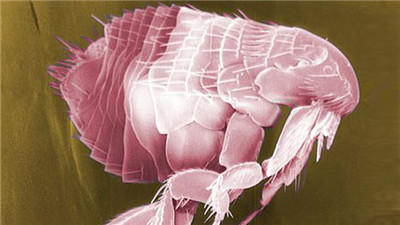3、The Plague Bacteria Starved Fleas
瘟疫病毒讓跳蚤們挨餓
Bubonic plague is spread by fleas, but the whole process is actually a lot more complicated and disturbing than that description suggests.
黑死病(腹股溝淋巴結炎性鼠疫)經由跳蚤們傳播,但是整個傳播過程實際上要比描述的更加復雜、更加讓人恐慌。

Fleas survive on the blood of animals, and so does the plague bacteria. Once a flea ingests diseased blood, the infection goes to work on the flea itself. It begins to reproduce in the flea’s stomach, living in the digestive tract of the insect and effectively blocking its digestive process. This often kills the flea, but in the meantime, it starves it. This means that the flea bites more often and looks for more animals for nourishment, spreading the disease faster than a flea with a normal life cycle.
跳蚤們靠動物的血液生存,瘟疫病毒也是如此存活。一旦跳蚤吸食了被感染的血液,這只跳蚤便被感染了。病毒在跳蚤的胃里繁殖,繼而生存在跳蚤的消化道里。跳蚤的消化過程便被大大滴限制了。通常這樣會殺死被感染的跳蚤,在此期間跳蚤會遭受饑餓煎熬。這意味著被感染的跳蚤要尋找和叮咬更多的動物來維持營養(yǎng),所以它們傳播疾病的速度要比正常的跳蚤快很多。
Cats and rats are particularly susceptible to the plague virus, which further helps it spread. When the flea’s usual host—rodents—start dying out in massive amounts, it seeks other hosts, pushing the disease to domesticated animals and humans. (Dogs have a natural resistance to the plague bacteria, and even if they’re bit and are repeatedly exposed, they usually don’t become sick.)
貓和老鼠尤其容易感染到瘟疫病毒,這進一步幫助了病毒的傳播。當跳蚤的宿主(嚙齒目動物)大量死去,跳蚤便去尋找其他的宿主,于是瘟疫便被傳給家養(yǎng)的動物和人類。(狗對瘟疫病毒有一種天然的抵抗力,即使它們經常被跳蚤叮咬,被感染瘟疫病毒,它們也不會生病。)











